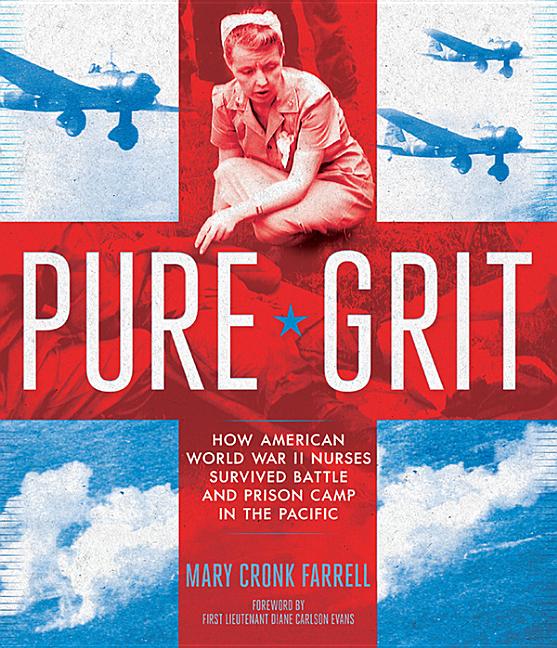Meet-the-Author Recording with Mary Cronk Farrell
Pure Grit: How American World War II Nurses Survived Battle and Prison Camp in the Pacific |
Mary Cronk Farrell introduces and shares some of the backstory for creating Pure Grit: How American World War II Nurses Survived Battle and Prison Camp in the Pacific.
Translate this transcript in the header View this transcript Dark mode on/off
Mary Cronk-Farrell: Hello. This is Mary Cronk-Farrell and I'm the author of Pure Grit: How American World War II Nurses Survived Battle and Prison Camps in the Pacific.
When I discovered American women were captured POW by the Japanese in World War II, I was flabbergasted. Why had I never heard a single mention of them? "Maybe it was just one or two women," I thought. "Maybe they were captured for a couple of days and released."
No, I discovered seventy-nine Army and Navy women were captured. They were imprisoned for three years, where they set up hospitals inside the camp and cared for others. They nearly starved to death before they were liberated.
I couldn't believe it. I felt I had been robbed. Because, as a young girl growing up, it would have made a huge difference to me if I had had role models like these courageous women. How could I not write their story?
Now I'll read an excerpt from Pure Grit:
The Los Baños internment camp had grown to 1,600 prisoners. The hospital expanded again, and the Navy nurses were mentally and physically exhausted. Water was only turned on two hours a day. Gardening became an absolute necessity as rations decreased.
"If only the corn grew as fast as the greens," thought Peggy Nash. She had been a tall, thin 130 pounds when the war started. On the Los Baños diet, she fell to 80 pounds. For breakfast, she ate a mush that tasted like wallpaper paste and had weevils in it. "They would give us milk for it," she said, "And if you were lucky, you'd get a banana. The second of our two meals a day was a stew all made of vegetables and that was served at 5 PM. We had no meat, no protein of any kind."
When a garrison of Japanese soldiers moved in and another 400 civilians, the camp gardens could not feed everyone. Inmates started eating leaves and even digging up loathsome slugs for food.
Peggy said, "We'd look outside the fence and see monkeys in the banana trees. We'd see them peel bananas. We stared at them. We were really starving, but the guards shot any prisoner caught going over the fence."
The hospital filled with patients suffering malnutrition, and then the deaths began. When Peggy's arms and legs puffed with fluid, she knew she had the dreaded beriberi. Weak and short of breath, with a temperature of 106 degrees, she soon lay in one of her own hospital beds.
Over time, Peggy recovered enough to get back on her feet. "We kept taking care of patients, so we were all getting weaker," she said. "I was getting to the point where I'd look at a pair of stair steps and think, 'I can't walk up', and neither could anyone else. You never knew when you went to bed at night if you'd wake up in the morning."
How many died, we'll never know. Two or three died every day. One would say to another, "If you think you're going to die, you'd better start digging your grave because I'm just too weak to do it."
The Navy nurses joked with people trying to keep up their spirits. One woman cried, afraid she was dying. Peggy evoked a smile, telling her, "You can't die. We can't bury you here. You don't have any nice clothes to wear."
It was faith in God, family, and the nursing profession that helped Peggy keep hope alive. She said, "We kept busy taking care of patients. We didn't have time to think about ourselves."
This Meet-the-Author Recording with Mary Cronk Farrell was exclusively created in October 2018 by TeachingBooks with thanks to Abrams Books for Young Readers.



